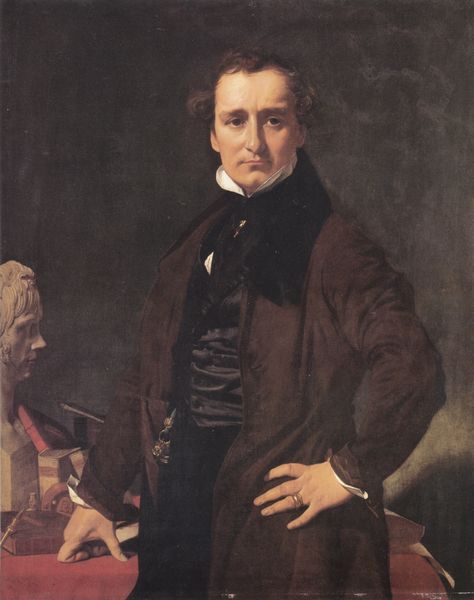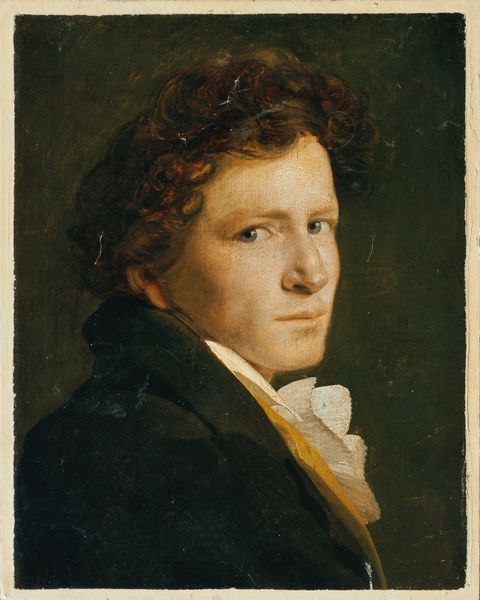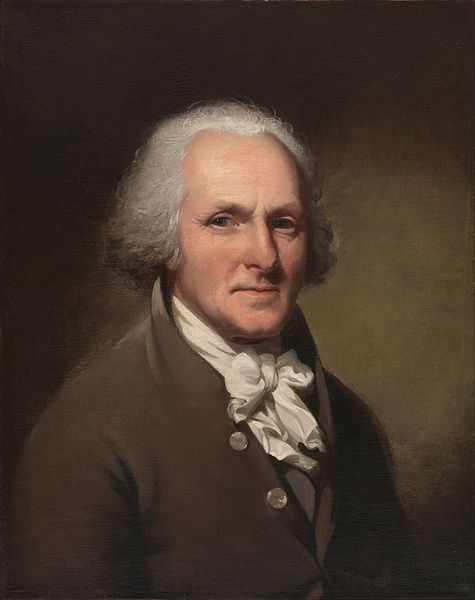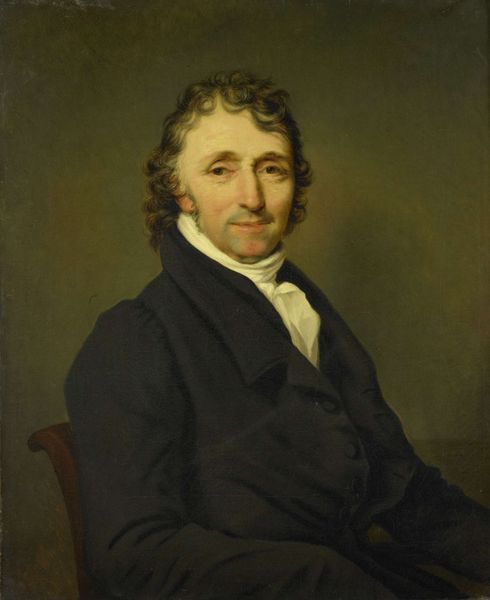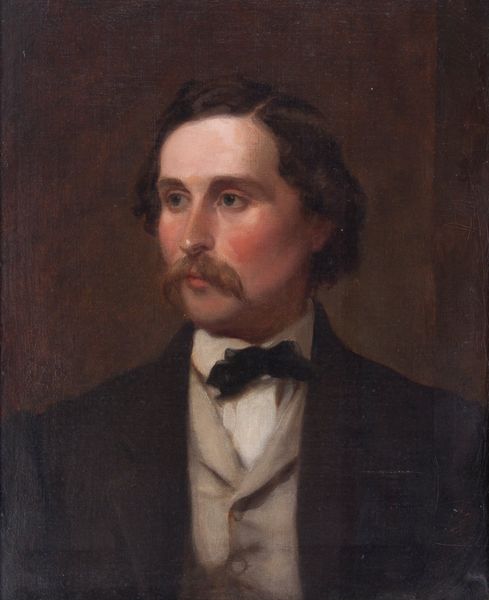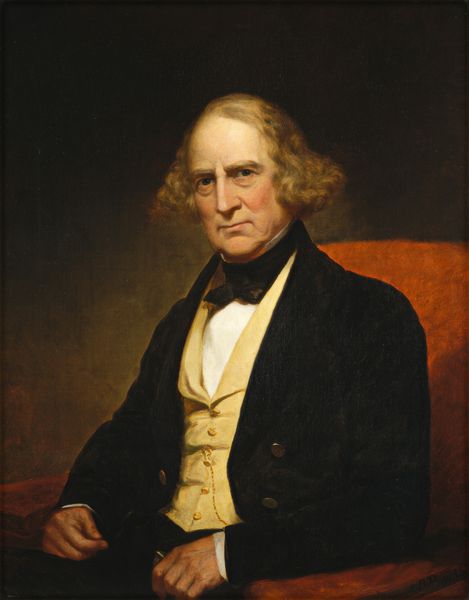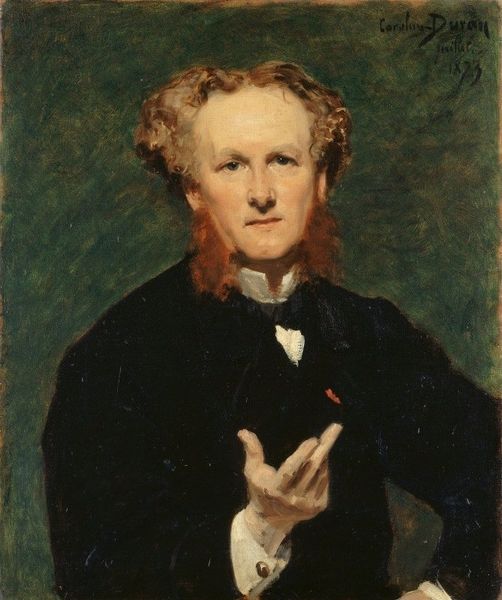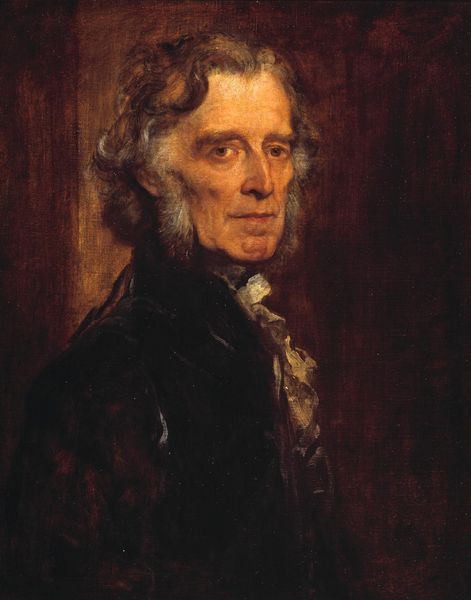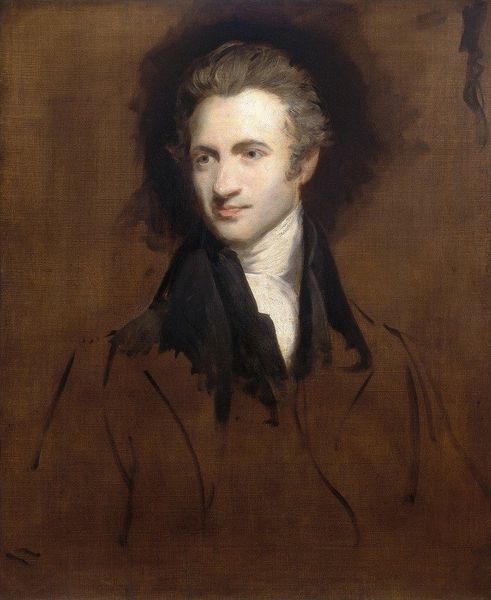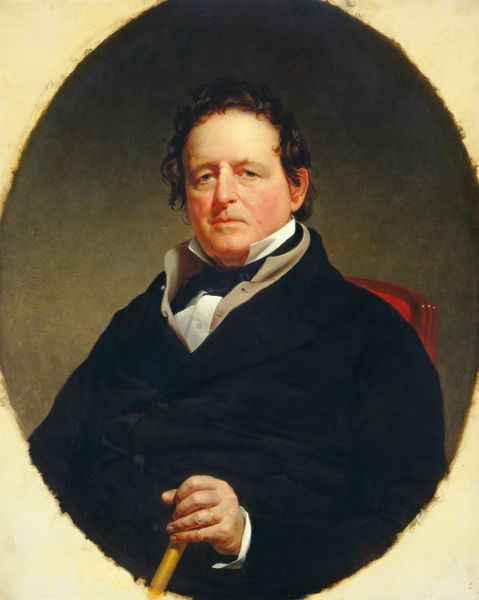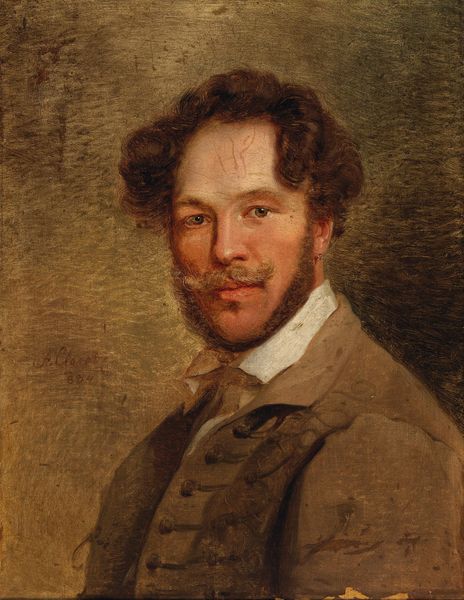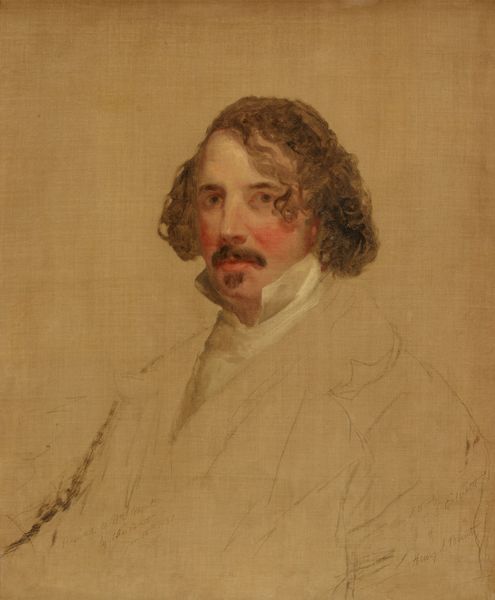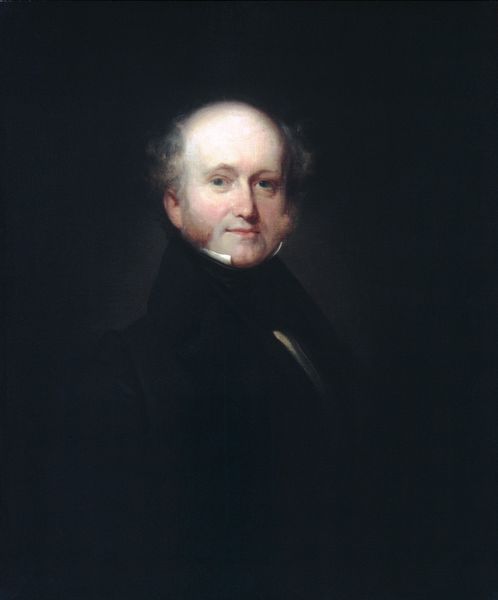
painting, oil-paint
#
portrait
#
self-portrait
#
painting
#
oil-paint
#
romanticism
#
academic-art
Copyright: Public domain
Curator: This is Jérôme-Martin Langlois’s "Self Portrait," painted around 1830. Editor: It’s got this hazy, almost unsettled feel to it. Not necessarily gloomy, but certainly…introspective? Curator: Well, considering the artist was at the peak of his career at this time, recognized within academic circles, maybe there is a kind of reflection happening. This self-representation feels charged, as if searching within. Notice how his gaze meets ours. Editor: I’m also struck by how visibly the oil paint is worked on the canvas. You can see the brushstrokes, especially around his coat. It lends a sort of rawness, juxtaposed with the smooth finish of his face. It shows process, a physical construction of self. Curator: Right. The layering of materials adds a symbolic dimension too, the artist almost constructing a version of himself layer by layer. The white of his cravat creates a break from the earthiness that then rises to his flushed face. There is an interplay of light and shadow. Do you notice how the shadows feel darker and more enveloping? Editor: Almost consuming him, right? Like he’s fighting his way out of them. The color palette is quite limited, very grounded. Browns and whites, mostly, so it reads as honest in a strange way. Honest about the work itself, and the labor that went into making it. What would it have taken for Langlois to produce his own image with these materials and what that meant during the period? Curator: Yes. But then think about Romanticism, its emphasis on emotion, and its connection to an interior world. Here, the shadows and the limited color, perhaps these aren't constraints, but tools to evoke an inward journey. Editor: An economic way to convey a powerful idea using just what’s necessary. Curator: A self portrait captures a dialogue with the self in all its historical richness and psychological complexity. Editor: Definitely gives us a tangible encounter with materials, processes, and individual subjectivity all at once.
Comments
No comments
Be the first to comment and join the conversation on the ultimate creative platform.
